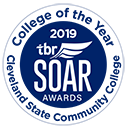Broadcast Technicians
Broadcast Technicians
27-4012.00
Median wages
$41,330
Set up, operate, and maintain the electronic equipment used to transmit radio and television programs. Control audio equipment to regulate volume level and quality of sound during radio and television broadcasts. Operate transmitter to broadcast radio or television programs.
- Monitor strength, clarity, and reliability of incoming and outgoing signals and adjust equipment as necessary to maintain quality broadcasts.

- Observe monitors and converse with station personnel to determine audio and video levels and to ascertain that programs are airing.

- Monitor and log transmitter readings.

- Report equipment problems, ensure that repairs are made, and make emergency repairs to equipment when necessary and possible.

- Play and record broadcast programs using automation systems.

- Control audio equipment to regulate the volume and sound quality during radio and television broadcasts.

- Align antennae with receiving dishes to obtain the clearest signal for transmission of broadcasts from field locations.

- Maintain programming logs as required by station management and the Federal Communications Commission.

- Regulate the fidelity, brightness, and contrast of video transmissions, using video console control panels.

- Select sources from which programming will be received or through which programming will be transmitted.

- Set up, operate, and maintain broadcast station computers and networks.

- Schedule programming or read television programming logs to determine which programs are to be recorded or aired.

- Install broadcast equipment, troubleshoot equipment problems, and perform maintenance or minor repairs, using hand tools.

- Preview scheduled programs to ensure that signals are functioning and programs are ready for transmission.

- Substitute programs in cases where signals fail.

- Prepare reports outlining past and future programs, including content.

- Record sound onto tape or film for radio or television, checking its quality and making adjustments where necessary.

- Instruct trainees in how to use television production equipment, how to film events, and how to copy and edit graphics or sound onto videotape.

- Edit broadcast material electronically, using computers.

- Give technical directions to other personnel during filming.

- Make commercial dubs.

- Develop employee work schedules.

- Design and modify equipment to employer specifications.

- Determine the number, type, and approximate location of microphones needed for best sound recording or transmission quality and position them appropriately.

- Produce graphics for broadcasts.

- Organize recording sessions and prepare areas, such as radio booths and television stations, for recording.

- Set up and operate portable field transmission equipment outside the studio.

- Discuss production requirements with clients.

- Produce educational and training films and videotapes by performing activities, such as selecting equipment and preparing scripts.
- Computer aided design CAD software
 — Autodesk AutoCAD
— Autodesk AutoCAD  ; Dassault Systemes CATIA
; Dassault Systemes CATIA 

- Data base user interface and query software — Data entry software


- Desktop publishing software — Adobe Systems Adobe InDesign


- Electronic mail software — Email software

- Graphics or photo imaging software — Adobe Systems Adobe Illustrator
 ; Adobe Systems Adobe Photoshop
; Adobe Systems Adobe Photoshop 

- Office suite software — Microsoft Office

- Operating system software — Cisco IOS; Linux
 ; Microsoft Windows; UNIX
; Microsoft Windows; UNIX 

- Presentation software — Microsoft PowerPoint


- Spreadsheet software — Microsoft Excel


- Video creation and editing software — Adobe Systems Adobe Premiere Pro; Apple Final Cut Pro
 ; Video decoder software; Video encoder software
; Video decoder software; Video encoder software
- Word processing software — Microsoft Word

![]() Hot Technology — a technology requirement frequently included in employer job postings.
Hot Technology — a technology requirement frequently included in employer job postings.
- Critical Thinking — Using logic and reasoning to identify the strengths and weaknesses of alternative solutions, conclusions or approaches to problems.

- Active Listening — Giving full attention to what other people are saying, taking time to understand the points being made, asking questions as appropriate, and not interrupting at inappropriate times.

- Monitoring — Monitoring/Assessing performance of yourself, other individuals, or organizations to make improvements or take corrective action.

- Operation Monitoring — Watching gauges, dials, or other indicators to make sure a machine is working properly.

- Speaking — Talking to others to convey information effectively.

- Complex Problem Solving — Identifying complex problems and reviewing related information to develop and evaluate options and implement solutions.

- Judgment and Decision Making — Considering the relative costs and benefits of potential actions to choose the most appropriate one.

- Reading Comprehension — Understanding written sentences and paragraphs in work related documents.

- Writing — Communicating effectively in writing as appropriate for the needs of the audience.

- Active Learning — Understanding the implications of new information for both current and future problem-solving and decision-making.

- Time Management — Managing one's own time and the time of others.

- Troubleshooting — Determining causes of operating errors and deciding what to do about it.











